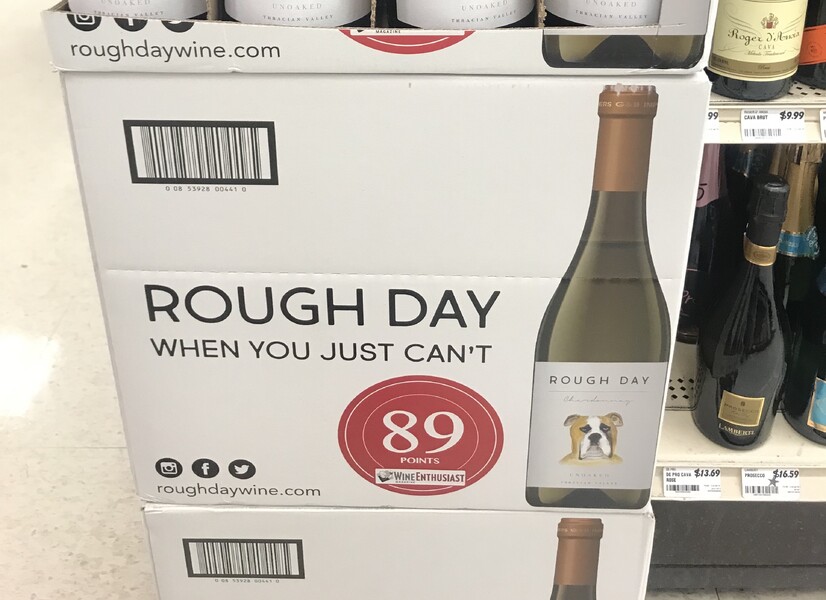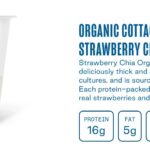Embrace the Transformation Framework of Job to be Done (JTBD)
A Guest Post by Dr. Leigh George
I want to take you to wine shopping.
So, picture it.
We’re browsing the aisles looking for a bottle of wine to buy. You pick up a bottle and discover words like acidity, tannin, bouquet, and varietal and find the region the wine is from on the label or on a tag the store has hanging on the shelf.
And you might think, a bit irritated, “What do all these words mean?
All I want to know is whether the wine will taste good to me or not. How am I supposed to decide between all these bottles?” And it’s understandable to get frustrated in this situation. No one would blame you.
Because, of course, you’re frustrated. After all, the wine you’re looking to buy is talking to you in the language of wine, not your language. You are not a wine connoisseur and don’t get any insider, snobby lingo.
It’s not your language.
Nothing about the wine label or display speaks to why you might be interested in buying a bottle of wine in the first place.
And then, along the end of the aisle, you catch sight of a separate wine display.
As you walk closer, you see the words “Rough Day. When you just can’t.” You think to yourself: Now there’s a wine speaking MY language.
Your boss has added another project to your already overwhelming workload.
Then, your school called to tell you your child has a fever and needs to be picked up.
And your commute is a nightmare. You forgot to send your mother a birthday card.
Rough Day. When you just can’t.
What wine do you think you’ll buy?
What is so dramatically different about Rough Day wines, why they stand out from all the rest of the bottles on the shelf and get noticed—something we all want, right?—is that they are not trying to sell you wine through the language of wine.
Rough Day Wine is trying to sell you wine through your language, your needs, and the vision you have for yourself.
Whereas personas would have us believe that personal attributes unlock meaningful distinctions around behavior, Rough Day shows us another way to understand consumer behavior and decision-making.
Our behavior and the motivations that push us to act aren’t based on whether someone is a woman, Black, or whatever. Behavior isn’t based on some immutable identity. It’s based on the vision I have for myself within particular situations and circumstances. The version of me on the horizon I strive to become. A transformation I’m struggling to make. That is the context that shapes decisions.
While personas are useless when trying to understand the scope of a personal transformation, a tool that can help you is Job to be Done (JTBD).
What is the Job to be Done Framework?
The premise of JTBD is that people hire products and services to help them achieve the transformation they seek.
As JTBD understands, choosing a solution is just one extensive job interview for consumers. Will you make their life easier? Can you help them make progress? Will they be able to overcome what’s holding them back? Can they use you with minimal risk or anxiety? Does the value you provide outweigh the risks?
With JTBD, you’re not trying to determine why a particular person needs your product or service. You are seeking to understand what larger goal or ambition is driving someone even to consider a solution in the first place. In other words, you’re no longer identifying your audience through the lens of your business, and you are seeking to understand your product or service through the lens of your audience.
Unlike personas, which are innately biased because they focus on identity, JTBD is intrinsically inclusive. No one must look a certain way or be a certain age or sex to be a customer. Anyone that shares the Job is a customer.
Clarity is another benefit of focusing on a customer’s job instead of their identity.
Personas make it virtually impossible to define your audience because additional groups of people could be added. With JTBD, you are limited to understanding the single Job that drives the search for a solution. While multiple potential solutions exist, there is always only one Job.
Not only does JTBD change how we understand our audiences. It also changes how we know our competitors. Because the emphasis is on the position consumers are looking to fill, any “applicant” for that Job that meets the criteria for a solution is now a viable competitor.
No longer are competitors only other companies who do what you do. This is not how people think of competition when purchasing to hire for their Job.
Beyond comparing companies that provide similar products and services, people have many options because they don’t view competitors through the lens of business. They view competitors through the lens of the progress they want to make and what will best support that progress.
A viable solution could be a product or solution in a particular category. But it could also be doing nothing or sticking with what they’re already doing because the fear of change is greater than the chance of progress.
It could be handling the situation independently with resources already at hand.
It could be going in a completely different direction outside of your category.
For example, in the case of Rough Day wines, the JTBD could be a way to escape the unpredictability and stress of life, even for just a moment. A bottle of Rough Day could do the trick, but so could going for a walk, reading, exercising, or taking a bath. These solutions could all be considered competitors for the same Job.
The Job you get hired for is different from what you sell.
One of the biggest miscalculations I see companies making when defining the JTBD is to mistake what their product or service does with the job consumers are hiring for. And lucky for us, a Harvard Business School Online Jobs to be Done (JTBD) explainer that includes what they call “real world examples” provides a great model of the precise misconception about JTBD I’m talking about here.
Harvard says the JTBD of Zoom, that ubiquitous video conferencing platform, is “Connecting Remote Workers.”
Let me ask you something.
Have you ever woken up in the morning and your first thought was, “Oh my gosh. I am so excited. I can’t wait to connect with another remote worker today!”
No? I haven’t either.
Because the harsh reality is, and I hate to be the one to break this to you, no one needs what you are selling them. People don’t care about you. No one gets up in the morning and wonders: How can I spend more money with Amazon, Apple, Salesforce, or any organization?
People care about their goals, visions of the future, and what it takes to achieve them.
In today’s noisy marketing environment, we’re looking for a signal that someone tells us they understand what we’re struggling with and trying to achieve.
“Connecting Remote Workers” is not a JTBD. It describes what Zoom and every other video conferencing platform does. Connecting remote workers is Zoom’s dream, not mine.
The same is true of the other so-called real-life examples of JTBD that Harvard Business School Online provides:
PayPal: Providing a Secure Way to Make Online Payments
DoorDash: Delivering Food Safely and Conveniently
Each of these JTBDs describes what the company does. The business they are in.
They could apply to any online payments or food delivery service. None represent a desired transformation or progress a person wants and the motivation behind their search for a solution.
JTBD is deceptively simple. But that doesn’t mean it is easy.
When developing a JTBD, you must push yourself past just thinking about yourself, what your product is, what you do, what your mission is, etc., and instead think about the transformation you deliver for your customer.
Read that line again because it is crucial: Think about the transformation you are delivering for your customer. How are you changing their lives? How will their life be better after using your product? What are they able to do that they could not have before?
So, for example, if you’re a transportation company, a car company, or a ride-sharing company, transportation is not the Job to be done. Getting you from A to B is the essential function of these companies. A JTBD for a transportation company might be freedom of movement—the ability to go anywhere, anytime, whenever I want. That is a transformation.
If you’re Spotify or a similar music streaming company, listening to music is not a Job to be Done. It’s what that company does. An appointment for a music streaming company could be having a party anywhere. That is a transformation.
What Job to be Done are you working on for your brand?

Branding and Marketing Consultant | Writer | Speaker
Learn more about Dr. Leigh George and her work here.
You can set up a time to chat with me about your marketing challenges using my calendar. Email me jeffslater@themarketingsage.com Call me. 919 720 0995. The conversation is free, and we can explore if working together makes sense. Watch a short video about working with me.





